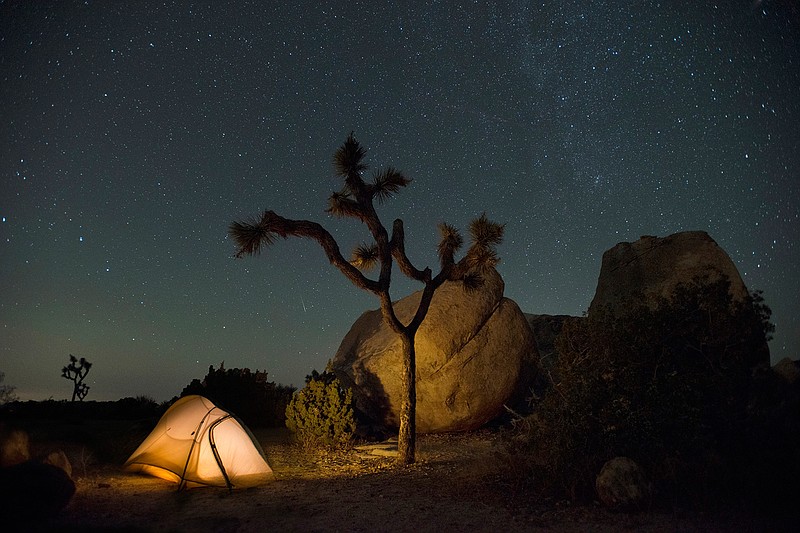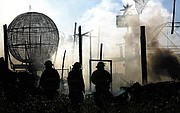Every year, hundreds of millions of people visit beloved U.S. national parks. While most visitors may have a good time, others could have used some advice before their visit.
Even though visiting a national park may seem like a straightforward endeavor, expert insight can help you make the most of it. That is particularly true this year because the pandemic continues to affect park rules (such as masking), accessibility (some have reinstated reservation systems) and more.
The Washington Post spoke to four national parks experts to get the best tips ahead of your trip.
1. Plan your trip in advance
Once you decide on taking a national park trip, start doing your homework. Cynthia Hernandez, public affairs specialist for the National Park Service, recommends that visitors start their research months ahead of time to plan a visit with fewer crowds, secure a campsite, and book any necessary permits or reservations.
Then, the day before your trip, or the day of, check park websites or the National Park Service app to make sure nothing has changed.
"We just really want visitors to be informed so they can have a great trip," Hernandez says. "No one wants to show up and realize that a specific entrance to the park is closed."
Doing your homework also means finding out about perks such as fee-free days, which you can take advantage of if you're on a budget, or avoid if you're hoping to dodge crowds. The park system has a wealth of great alternatives to the big marquee parks where most visitors flock.
Visitors should be prepared to follow coronavirus protocols at parks. Masks are required at indoor park facilities and outdoor ones where social distancing is not possible.
2. Check the essentials list and prepare
for the elements
Hernandez says it is important for visitors to be prepared for sudden changes in temperature and weather, particularly during the summer.
"Pack extra layers of clothing, and definitely more water than you think you need," she says. "We have a good 10-essentials list of things you could use in parks, like maps, water, good shoes, a first aid kit, that kind of thing." That list is available at nps.gov/articles/10essentials.htm.
In addition to the park's environment and climate, it's important to keep your own health and fitness in mind.
"They should think about their physical limitations before embarking on a hike," Hernandez says. "Going down a trail, it might seem kind of easy but by the time they turn around, it's uphill and you have used up a lot of your water supply toward the end of the day - it's just not a good situation to be in."
3. Leave wild animals alone
A surefire way to have a horrible time at a national park is to get injured during your visit. Every year, there are reports of park visitors approaching wild animals and suffering injuries as a result. No matter how good you think the shot will be, don't try to get close to animals for the photo op.
"I've seen people try to put their kids in front of black bears [for pictures]," says Phil Francis, chairman of the Coalition to Protect America's National Parks. "Not too smart."
Not only is it illegal to intentionally disturb wildlife (including feeding, scaring, touching them, etc.), each park has different rules for how much distance visitors should keep from wildlife. Most, but not all, require a minimum of 25 yards for the majority of animals, and 100 yards for predators including wolves and bears.
4. Stay on dedicated trails for safety and environmental reasons
Staying on trails is beneficial to the parks and their visitors. Not only does keeping to designated trails protect the park landscape from erosion, it helps keep people safe from dangerous terrain.
"There's a reason trails are where they are," Francis says.
According to data compiled by Outforia, an outdoors and nature guide website, the most common causes of death at U.S. national parks are from falls. Reduce that risk by sticking to marked trails.
5. Hold on to your trash until you leave the park
With the immense number visitors traveling to parks each day, keeping parks clean is a major undertaking.
Get familiar with the "leave no trace" ethos so you can dispose of waste properly and minimize your impact on the parks. That is particularly important during the pandemic. Will Shafroth, chief executive of the National Park Foundation, says parks have had staffing problems in the past year, and that garbage cans received less maintenance as a result.
My Private Ranger guide Kent Taylor, who runs private park tours, says visitors should follow the old camping adage and "pack out what you pack in," disposing garbage well outside of the park regions. He avoids throwing his trash out in park trash cans, or even in communities around the parks.
"At Yellowstone, 35,000 people a day are visiting that park. How much trash is generated by that?" Taylor says. "Take [your trash] outside the park so it would be one less thing that the parks have to deal with."


